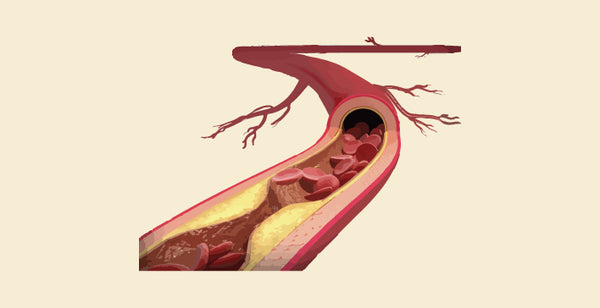Difference between Atheroma and Atherosclerosis: Atheroma and atherosclerosis are two terms often used interchangeably, yet they represent distinct stages in the progression of cardiovascular disease. Understanding the differences between these terms is crucial for grasping the development and management of heart-related conditions. In this article, we delve into the disparities between atheroma and atherosclerosis, exploring their definitions, key features, and how they contribute to cardiovascular disease.
Difference between Atheroma and Atherosclerosis
Below is the differnce between Atheroma and Atherosclerosis in tabular format
| Feature | Atheroma | Atherosclerosis |
| Definition | Fatty deposits within the arterial wall | Hardening and narrowing of the arteries due to plaque buildup |
| Stage of Disease | Early stage of plaque formation | Advanced stage of plaque buildup and arterial damage |
| Composition | Soft, fatty deposits | Hardened plaque consisting of fat, cholesterol, and calcium |
| Location | Found within the innermost layer of the artery wall | Extends to the inner layer of the artery and beyond |
| Effects | May not cause symptoms | Can lead to symptoms such as chest pain and shortness of breath |
| Progression | Can progress to atherosclerosis if left untreated | Represents advanced atherosclerotic disease |
| Diagnosis | Detected through imaging tests like ultrasound | Detected through imaging tests like angiography or CT scans |
| Treatment | Lifestyle changes and medications to prevent progression | May require more aggressive treatments like angioplasty or surgery |
| Risk Factors | High cholesterol, high blood pressure, smoking | Same as atheroma, plus diabetes, obesity, and family history |
| Complications | May lead to the formation of a blood clot (thrombus) | Increased risk of heart attack, stroke, and peripheral artery disease |
| Prevention | Healthy lifestyle choices, cholesterol-lowering medications | Same as atheroma, plus regular exercise and weight management |
What is Atheroma?
Atheroma is an early stage of atherosclerosis characterized by the buildup of fatty deposits within the arterial wall. These fatty deposits, also known as plaques, consist of cholesterol, calcium, cellular waste, and other substances. Over time, these plaques can harden and narrow the arteries, restricting blood flow and increasing the risk of cardiovascular events such as heart attack and stroke.
Key Features of Atheroma:
- Early stage of plaque formation
- Soft, fatty deposits within the innermost layer of the artery wall
- May not cause symptoms initially
- Can progress to atherosclerosis if left untreated
- Detected through imaging tests like ultrasound
- Risk factors include high cholesterol, high blood pressure, and smoking
- May lead to the formation of a blood clot (thrombus)
- Treatment includes lifestyle changes and medications to prevent progression
- Often asymptomatic until complications arise
- Prevention involves healthy lifestyle choices and cholesterol-lowering medications
What is Atherosclerosis?
Atherosclerosis is an advanced stage of cardiovascular disease characterized by the hardening and narrowing of the arteries due to plaque buildup. As the plaques grow, they can restrict blood flow to vital organs and tissues, leading to serious complications such as heart attack, stroke, and peripheral artery disease. Diagnosing atherosclerosis involves a series of tests and procedures aimed at evaluating the extent of plaque buildup and arterial damage. These may include a thorough medical history and physical examination to assess risk factors and symptoms. Cardiac catheterization, Doppler sonography, and blood pressure comparison are commonly used diagnostic procedures. Nuclear scans such as MUGA/radionuclide angiography and thallium/myocardial perfusion scan can further assess heart function and blood flow. Additionally, computerized tomography (CT) can identify coronary calcification, indicating future heart problems. These tests help healthcare providers accurately diagnose atherosclerosis, assess its severity, and determine the risk of future cardiovascular events.
Key Features of Atherosclerosis
- Advanced stage of plaque buildup and arterial damage
- Hardened plaque consisting of fat, cholesterol, and calcium
- Extends to the inner layer of the artery and beyond
- Can lead to symptoms such as chest pain and shortness of breath
- Represents advanced atherosclerotic disease
- Detected through imaging tests like angiography or CT scans
- May require more aggressive treatments like angioplasty or surgery
- Risk factors include the same as atheroma, plus diabetes, obesity, and family history
- Increased risk of heart attack, stroke, and peripheral artery disease
- Regular exercise and weight management are crucial for prevention
Similarities Between Atheroma and Atherosclerosis
While atheroma and atherosclerosis represent different stages of cardiovascular disease, they share several similarities:
- Both are cardiovascular conditions.
- Both involve the buildup of plaque within the arteries.
- Both can lead to serious complications, such as heart attack and stroke.
- Both are influenced by similar risk factors, including high cholesterol, high blood pressure, and smoking.
- Both can be detected through imaging tests such as ultrasound, angiography, or CT scans.
- Both require management through lifestyle changes and medications to prevent progression.
| Check out More Articles | |
| Difference Between Cartilage And Bone | |
| Difference Between Endocrine And Exocrine Glands | |
| Difference Between Cell Wall And Cell Membrane | |















